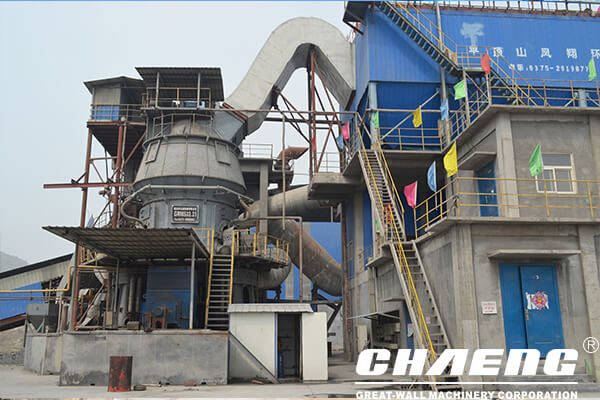Industry Reports
Problems for Vertical Mill Selection System and 10 Factors Analysis
1. The air leakage of the system is mainly due to the loose seal of the vertical mill body and the air leakage of the three lock air valves, which causes the system to produce low temperature and the differential pressure is too small.
2. Hot air pipe dust accumulates. When the hot air pipe dust accumulates more than 2/3, the temperature and pressure of the mill are low, and the materials are not dried in time.
3. The spout ring is made up of a rhombic slot that is oblique to the horizontal direction. It is surrounded by a circle around the grinding disc and is lined with liners. The gas entering the mill is swept by the swirling wind under the effect of the change of the nozzle ring and the guide cone of the air guide, preventing the material from falling through the nozzle ring. The material that meets the particle size requirements is conveyed by the swirling air to the upper separator. Into the mill inspection found that the nozzle ring liner wear is serious, in addition to the gap between the nozzle ring and the disc has been worn from the original 6-8 mm to an average of 20 mm, up to 40 mm in individual parts.

4. The wind speed between the dust separator and the lower cone is too low. The role of the ash bucket is mainly twofold. First, on the one hand, the coarse powder in the powder selection area is collected and returned to the center of the grinding disc to prevent the coarse powder from being brought to the powder selection area before returning to the grinding wheel; on the other hand, a new feed is provided. The material is fed into the ash hopper so that the new feed containing large granules is evenly distributed and the wear of the grinding roller is even. Secondly, on the one hand, the material flow from the grinding lamella to the sizing area is controlled, and the inconvenience caused by the air scramble above the grinding splat is reduced. Necessary material internal circulation; on the other hand, the dusty gas above the grinding disc is gradually accelerated to the powder separator area. If the wind speed between the hopper classifier and the lower cone is too low, part of the dust-laden gas cannot reach the powder separator area. This will inevitably cause unnecessary circulation within the material, leading to increased energy consumption in mills and reduced production.
5, the choice of powder cone is not reasonable.
6, the guide vane and rotor spacing is too large. This zone is a discrete separation functional zone in which the material forms a spiral motion with the gas flow while falling, and the particle flow forms an annular column in the annular zone, which is orthogonal to the plane inlet gas flow; the solid phase particles are in the gas flow Under the action of viscous force, it has the tendency of rotating with the air flow, and has the inertia of moving in a tangential direction. The smaller the inertia of the fine particles is, the stronger the tendency of the air flow to move into the rotor along a path that does not coincide with any flow line. The coarse particles cannot be carried into the rotor by the airflow due to their greater inertia, and they collide with the guide vanes and then fall back into the hopper.
7. The guide vane and the rotor are not in the same height direction.
8, coarse powder and fine powder back mixing. The material is transported by the radial air flow between the rotor blades. The radial air flow in the channels between adjacent blades forms an asymmetrical distribution due to the counter-rotating eddy currents; the centripetal flow velocity near the windward surface of the blade is relatively large, and the centripetal flow velocity near the blade leeward surface is relatively high. Small or appearing outward radial velocity, this kind of unnecessary small vortex causes the coarse powder to mix back, bring about the deviation of dividing the particle size, reduce classification accuracy.
9, blade wear is serious. Because the dust-laden air velocity at the outlet of the air guide vane is much lower than the linear velocity of the rotor edge, the dust-laden air stream causes strong erosion of the rotor vanes and causes wear.
10. The poor sealing effect between the classifier rotor and the housing. Classifier sealing failure is one of the reasons for the product running rough, so that the fine powder mixed with millimeter particles, large fluctuations in particle size, resulting in a greater impact on product quality.



